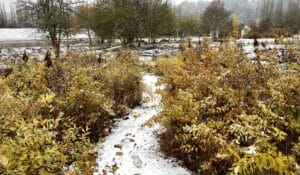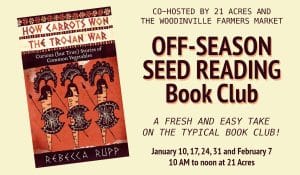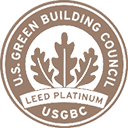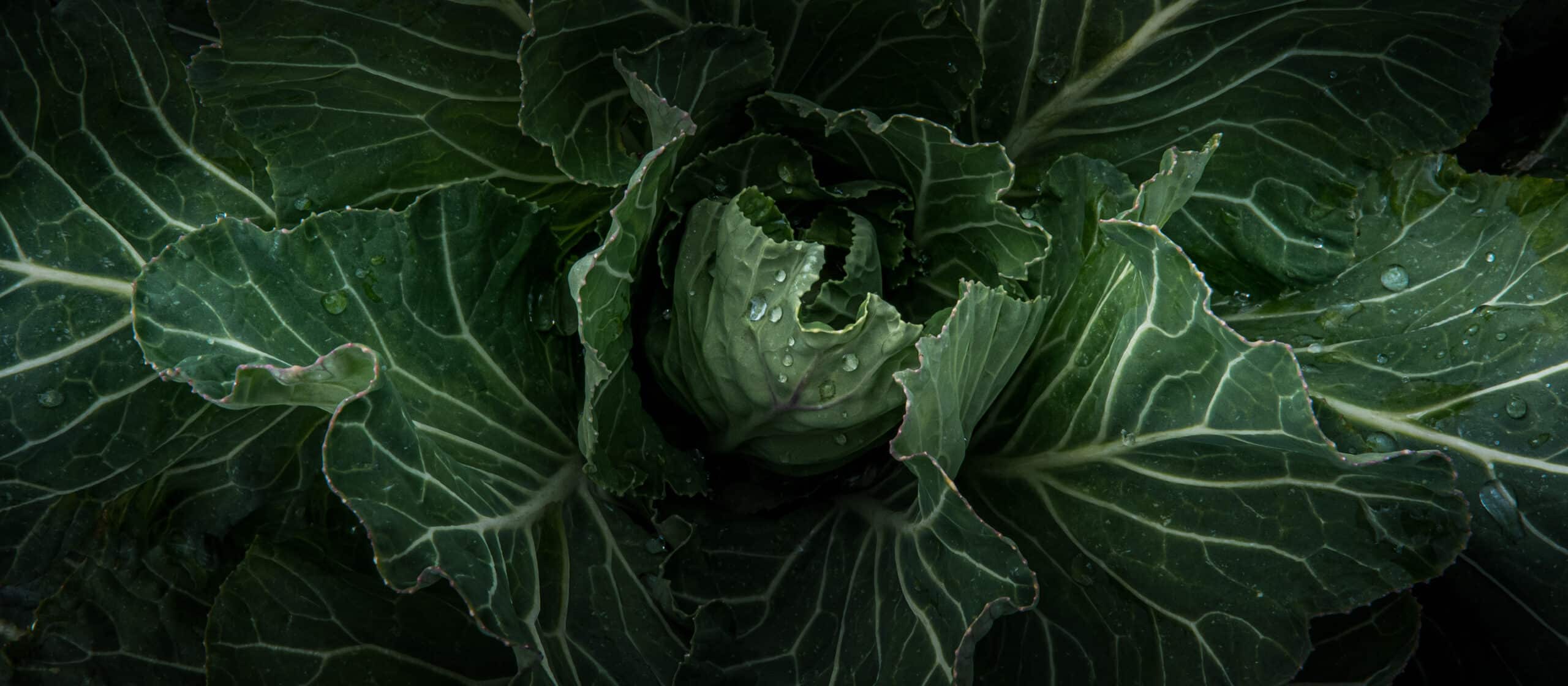
Field Trip to Waste Management Recycling Center
Field Trip to Waste Management Recycling Center
- posted on: October 18, 2015
- posted by: 21 Acres
"*" indicates required fields

Recently 21 Acres staff visited Waste Management’s Cascade Recycling Center to learn more about the process and to help share this greater knowledge with others. Andrew Ely took time to write about the field trip:
What we learned when visiting Waste Management’s recycling center:
In order for materials to be recycled through curbside pick-up it must meet three criteria:
1) Collectability – is the material easy to collect? Can it fit into the bin and the truck?
2) Sortability – does the material have characteristics that allow it to be sorted (is it magnetic)?
3) Marketability – does the item have a market ? Is there a processor who can use the material?
All of these criteria must be met. The material must be collectible, sortable, and marketable. If any one of these criteria is not met, it cannot be recycled through Waste Management’s single stream system. However, individuals can rethink, re-purpose and reuse their own materials and in many cases there is a place to take the materials. For example, Styrofoam can go to Styro Recycle in Kent.
In order to most effectively recycle by placing items in the bin as they were purchased. This means do not crush, wrinkle or shred anything. Plastic-free shredded paper can be composted. Shredded paper never makes it to through the facility. In fact, during our visit, anywhere we looked we saw shredded paper. It makes like confetti in the truck and the facility and never makes it through the sorting process.
Dirty recyclables foul the system and lower demand for materials. All recyclables must be cleaned. And, how clean is “clean?”
Does it drip? Rinse it.
Yogurt, ice cream, milk, juice, wine, beer, or any other food or soap jugs, tubs or cups?
Fill the container one quarter of the way full with warm water, shake vigorously, pour it out. Place the container in the recycle bin. No lids please.
What to do with containers for peanut butter, mayo, mustard, honey and other viscous liquids?
Can you make a sandwich with it? Scrape it out with a spatula. Place in recycle bin. No lids please.
Not enough to make a sandwich? Let the dog lick it clean, rinse and place in recycle bin. No lids please. – Jane asked the question “Is dog-lick clean, clean enough?”
There should be no significant amount of food, debris, or other “leftovers” in the container.
Plastic bags are a “No-No!” in the curbside. But many groceries collect them and sell them directly to the processor. Plastic bags, cords, hoses, ropes and the like, bind the gears, cogs, and belts of the processing machines, stopping the facility. This costs time, money, and resources which is reflected in the bills of customers.
Please place all grocery plastic bags, garbage bags, newspaper bags etc. into one grocery bag and take it to a collection site in your neighborhood.
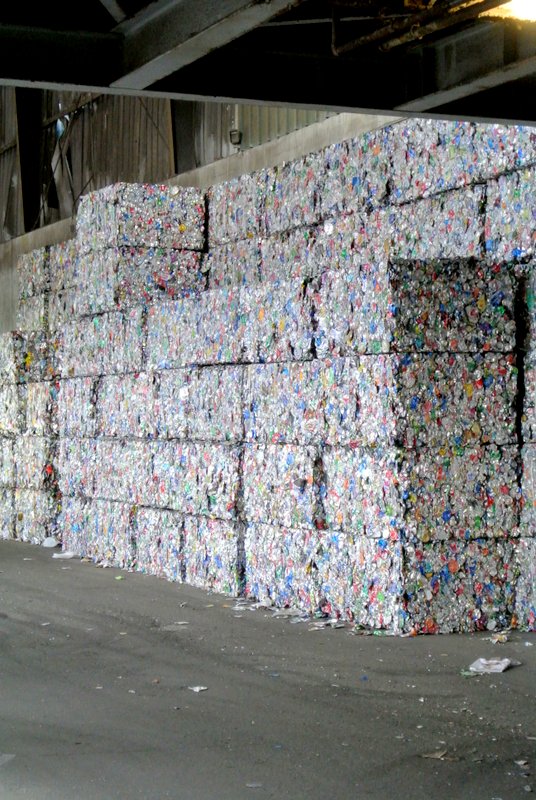
This is the result of an Eddy current. It is one of the last steps in the sorting process. Aluminum and plastic containers are the last items on the belt. The Eddy current creates a repelling magnetic field of sorts that “pops” aluminum off of a conveyor belt across a gap, and into a container. The rest of the materials, plastic (which is unaffected by the Eddy current) fall into the gap and onto the next conveyor.
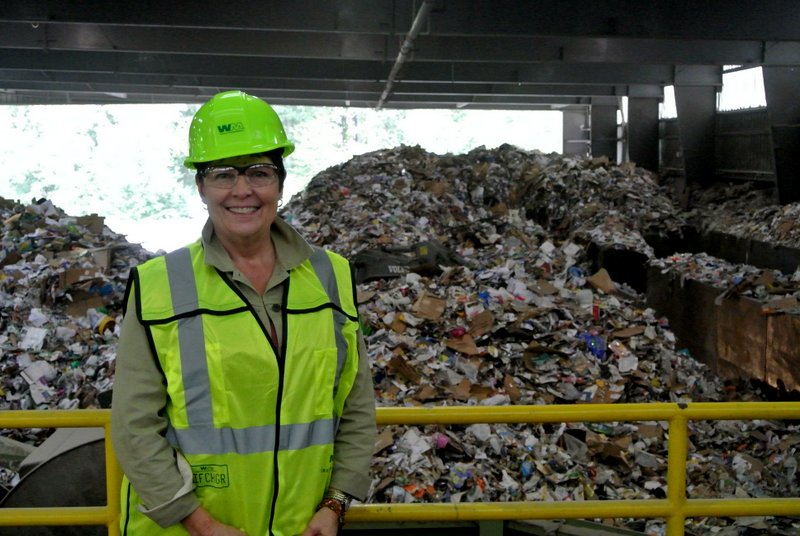
After the truck drivers run their route and fill up, they bring their trucks to the “tipping floor” where they tip their truck and the contents are dumped out. Over 600 tons of collected bin contents are tipped each day.
![Sean [I need one of those] ref_magnet](https://21acres.org/wp-content/uploads/2015/10/sean-i-need-one-of-those-ref_magnet.jpg?w=201)
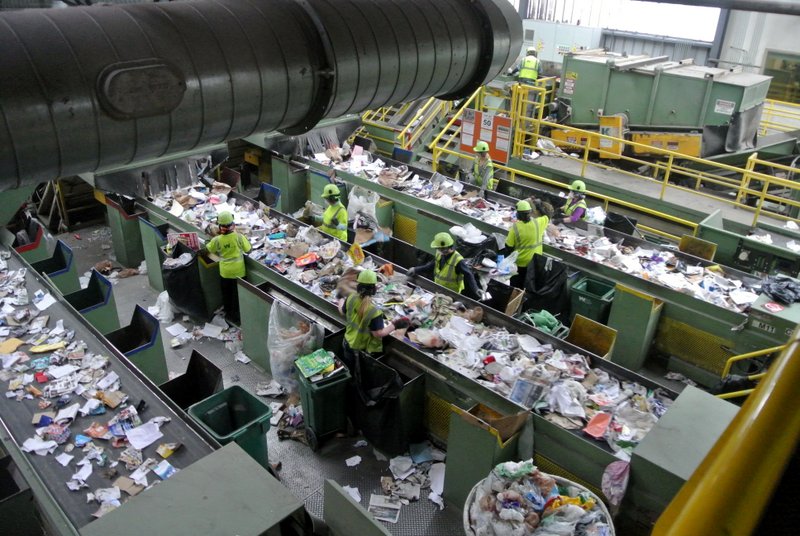
Everything that is tipped onto the floor gets sorted by hand too. People physically touch everything that goes into your curbside bin, be careful what you put in. Black garbage bags (full or empty) are removed and put in the landfill. For that matter, any bags (with their contents) are put in the landfill for safety reasons. Please place all clean recyclables loose in the container; no bags, please.
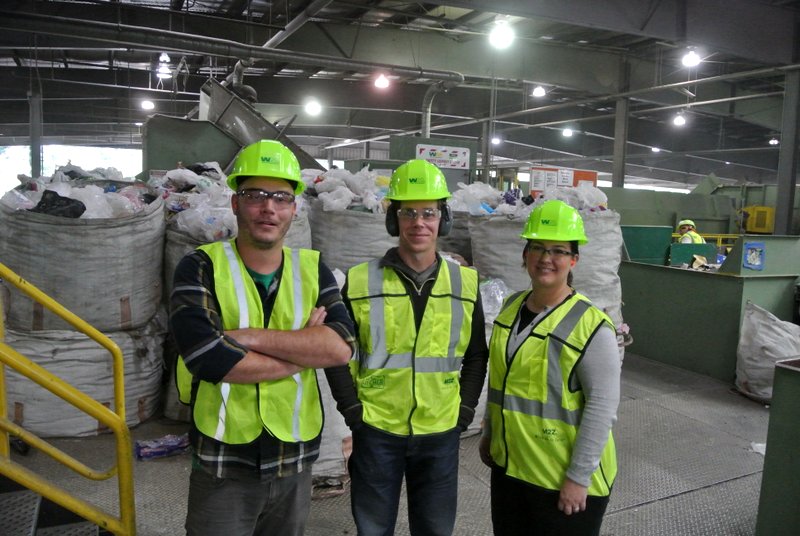
Speaking of plastic bags. Lose bags are often pulled off the line. Behind Sean, Tyler, and Kimberly are thousands of plastic bags. Plastic bags bind the gears and cogs of the sorting center, causing it to stop and ultimately costing the customer. Please refrain from placing plastic bags in the curbside bin. Plastic bags can be recycled at many local grocery stores.
When you do not know what to do with an item, please refer to your local collection service rules. Each region is different, depending on collectability, sortability, and marketability of the recyclables.
Before placing anything in a bin, make sure you verify that it is clean, it belongs in the bin you are placing it into. When in doubt, ask someone. Call Waste Management, call the Garden Hotline (they know more than just gardening), visit King County’s “What do I do with…?” webpage.
— Andrew










 back to blog overview
back to blog overview


